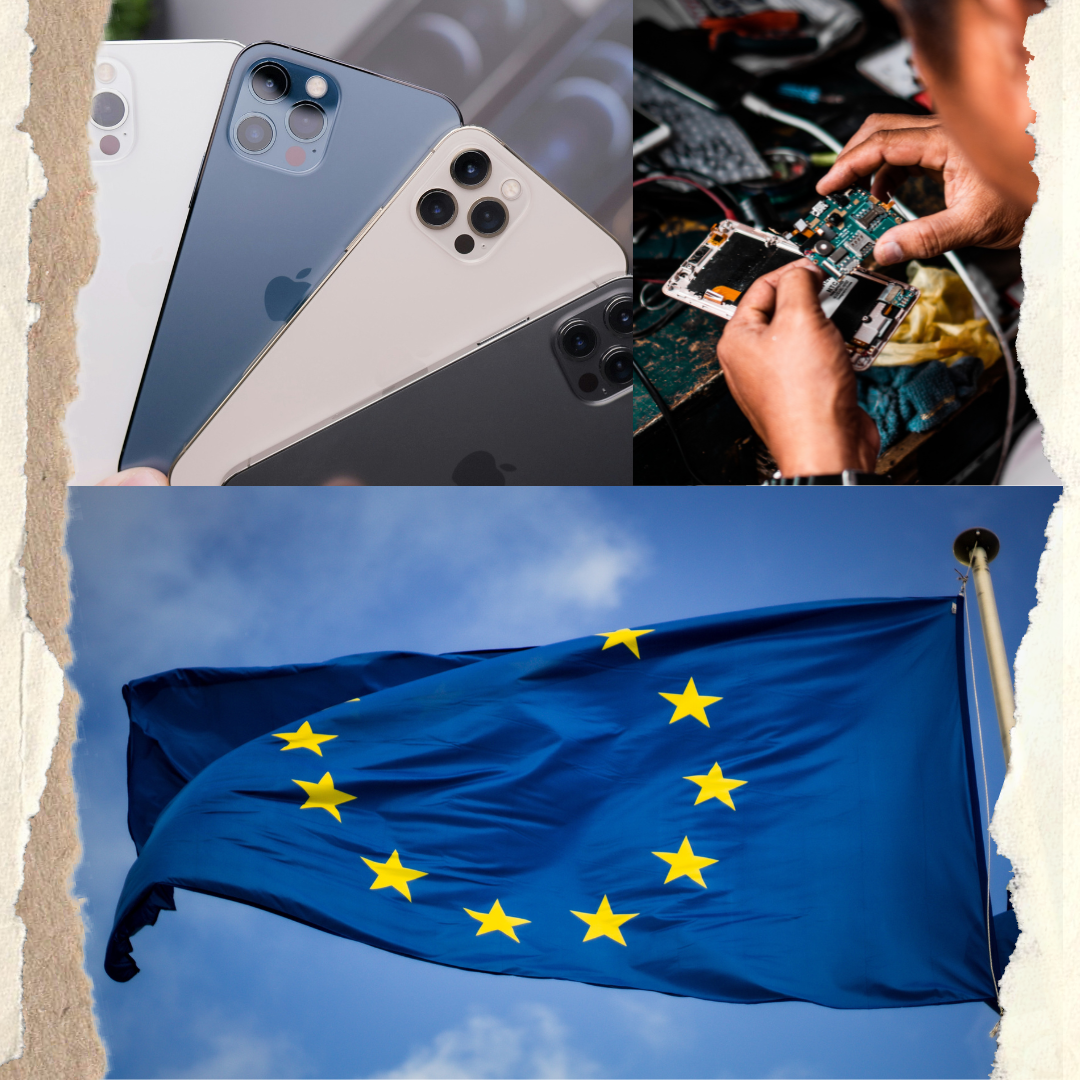Your ‘Right to Repair’

Have you ever gotten something repaired? Chances are that you have, whether it was a bike, a pair of jeans or something else. Often, it feels intuitive to repair broken things. However, our throwaway economy has made this difficult for us. I want to invite you to ask yourself a question: how would you feel about repairing a broken phone? These kinds of repairs are often quite expensive and usually, it’s cheaper to buy a new one. This might change with the new ‘Right to Repair’ policy, which I will elaborate on in this article.
Sustainability was, amongst others, a significant topic during the recent elections. Everyone has their own opinion on how society should become more sustainable. Parties like D66, Volt, and PVDA-GroenLinks advocate addressing the climate crisis through a strong European Union (EU), while the PVV and FvD, for example, argue for a Nexit, aiming to minimize involvement with the EU. The European Union (EU) is a unique economic and political union between 27 European countries. They collaborate to oversee various policy domains, including climate, migration, justice, and safety.
What can the EU bring us regarding sustainability?
But why is it important to ask ourselves the question of whether or not we should invest in a strong EU? The EU can have a lot of influence as their policies are binding for all EU member states, including the Netherlands. Hence, we cannot deviate from it nor avoid it, which is probably why some parties want nothing to do with the EU. However, the EU is especially important when it comes to sustainability regulations. They have been actively working on various sustainable policy initiatives in recent years under the collective term, the Green Deal. One of these policies is the ‘Right to Repair’, proposed by the European Commission on March 23 of this year.
What is the Right to Repair?
So, what does the Right to Repair mean? Imagine you buy a brand new iPhone 11, but after two weeks, the device starts crashing – a bitter pill to swallow, or “door de zure apple heen bijten”, as we would say in Dutch. Of course, you quickly get in touch with the seller, letting them know you’re not happy with your purchase. They immediately send you a replacement, which arrives at your doorstep the next day. Now, you can go back to playing Candy Crush level 743 or Wordfeud without any worries or stress. Everything’s sorted and you’re good to go!
But what if only a small part of your old iPhone 11 was broken? And that it would have been cheaper and better for the environment if they had repaired it? Repairing your phone would have saved 56 kilograms of CO2, equivalent to about 250 kilometers of driving, or a trip from Amsterdam to Cologne. Quite a difference, isn’t it?
Undermining the throwaway economy we live in
You might be simply glad to have received a new phone right away, not being concerned about how long it would have taken if they had repaired the old one. However, this story illustrates how our current throwaway economy works and where the EU can make a difference through regulations like the ‘Right to Repair.’ This policy advocates prioritizing product repair when you make a purchase. This is important because currently, in the Netherlands, both repairing and replacing are on the same level of hierarchy when a product is broken. However, when replacing is cheaper than repairing, someone might skip repair.
Importance of low repair costs
Because of the possibility for the producer to skip repair when this is more expensive, it is essential to keep repair costs as low as possible. Currently, no rules are established to keep the repair costs low. In this sense, the Right to Repair policy can be seen more as a symbolic nudge toward a greener world. A world where products are not easily discarded and replaced, but where repair takes center stage.
Conclusion
With this article, I aim to highlight your Right to Repair and amplify this nudge into a substantial push for both producers and consumers. Hopefully we’ll learn to prioritize repair over something new. This way, you can contribute to a more sustainable future. Thus, I invite you to think twice the next time your iPhone breaks during your Candy Crush level. By the way, did you know there are repair cafes you visit to repair your broken stuff? Read about it in our article.
